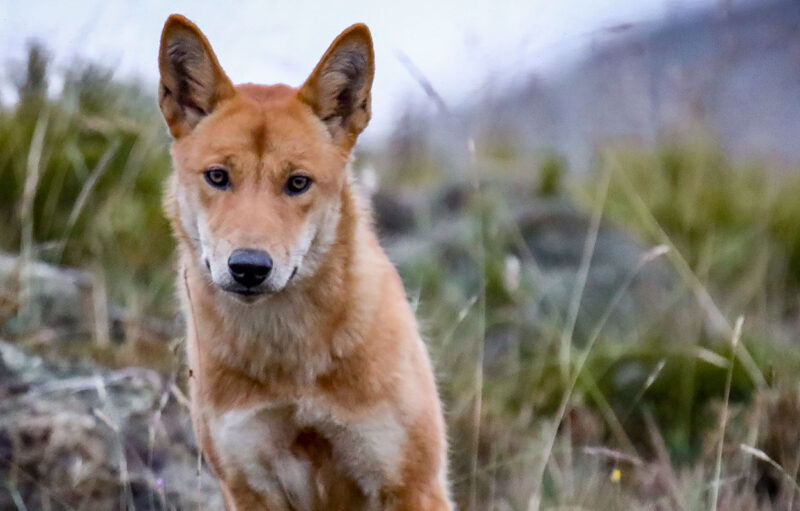PARK WATCH Article March 2024 |
Adrian Marshall, Grassy Plains Coordinator, on the recommendations of the latest State of the Environment report
The Allan Government must do more to protect grasslands. They are in significant decline according to the Victorian State of the Environment 2023 Report (SER), our state’s five-yearly nature report card.
Most other ecosystems are ‘largely stable’, but not grasslands. There’s a lot of work to be done across all of our landscapes, but grasslands are of particular concern.
What’s the problem?
Grasslands are in very bad shape, despite being Critically Endangered under our national nature laws, the Environment Protection and Biodiversity Conservation Act 1999 (EPBC Act) and threatened under the Flora and Fauna Guarantee Act 1988 (FFG Act).
There are four key reasons:
- Grasslands are still being cleared. This has been going on since colonial invasion.
- We’re not protecting the good stuff. Proportionally, there isn’t much grassland in the parks system compared to, say, forests, heathland or alpine areas.
- Most grassland is on private land, with little legal protection.
- The Melbourne Strategic Assessment, the one program for protecting significant areas of grassland, is not meeting its own targets. As the SER says, ‘The impact of the Western Grassland Reserve on the protection of grasslands is limited’.
Identify, purchase, protect
One of the SER’s recommendations to meet state biodiversity protection targets stands out: the Victorian Environmental Assessment Council should identify the best land in private ownership, especially in high-priority ecosystems and landscapes, for the government to buy.
Grasslands must be a focus of that investigation. It’s hard to believe, but we simply don’t know where the best bits are.
Getting grassland into the public reserve system is not enough. Shamefully, most grasslands in public ownership are losing their biodiversity, suffering from a lack of funding and resources for ecological burns and weed removal, as well as from erroneously being dumped in the too-hard basket.
With most grassland on private land, we desperately need better protections in this space. Developers and land bankers can incrementally ‘clear’ grassland by doing nothing to control weeds. The legislation covering this, the Catchment and Land Protection Act 1994 (CaLP Act), is useless and needs review.
Conversion of farmland to cropping is another increasing threat as farmers feel the economic stress of climate change. ‘Existing land use’ rights, which facilitate conversion, are a legal grey area that needs reform.
Other planning laws, which allow clearing for activities such as bushfire management, rock extraction and fencing, also need tightening.
Incentive programs to promote nature-positive management and on-title protections, such as covenants, should be boosted.
Prioritisation of conservation over development
Protecting biodiversity, habitats and public lands estate will require biodiversity conservation being given greater consideration in decisions involving competing public land uses.
Nowhere is this more evident than with grasslands, often misperceived as empty paddocks of no conservation value, a mindset that needs to change.
So much grassland is being lost to infrastructure such as intermodal freight hubs, poorly considered ‘sustainable’ solar, and road projects, and residential or commercial development. Not just in the big cities, but in regional centres across Victoria.
And it’s not just individual projects. It’s the design of whole precincts and growth areas, overseen by the Victorian Planning Authority, that need improved environmental focus.
Bringing people in
Public perception of grasslands is vital to their long-term survival. Our collective voice can get decision-makers to put grasslands front and centre.
To increase positive public perception, we need to make our grasslands more attractive. Managing them well is a good first step, but we really need flower power. Very public, very local, in your face floral display. And all the things that show we care, such as decent looking fences and good signage.
We need well-funded community education campaigns too. We need grasslands in the school curricula. We need to reach the culturally and linguistically diverse communities who live where grasslands grow. We need citizen science events and stargazing on the vast Victorian plains.
It is five years until the next SER report card. With some real action now, we can turn around the state’s inferior performance on grassland conservation. We know exactly how to do it.
- Read the latest full edition of Park Watch magazine
- Subscribe to keep up-to-date about this and other nature issues in Victoria
- Become a member to receive Park Watch magazine in print
